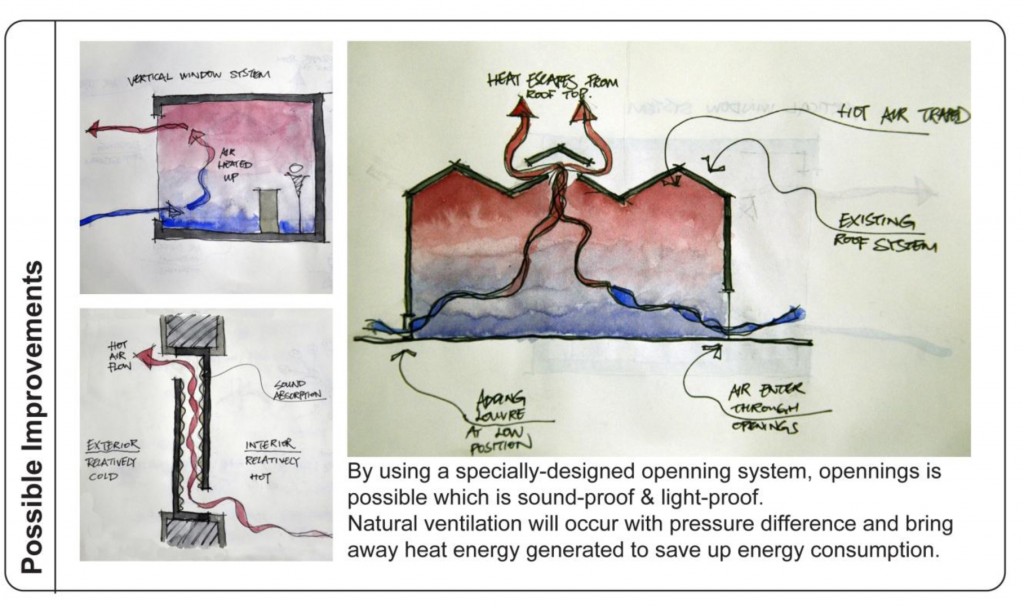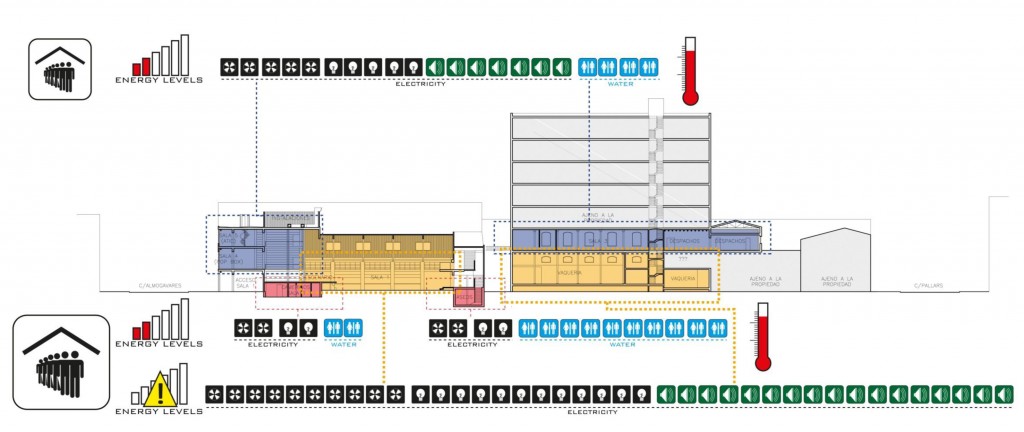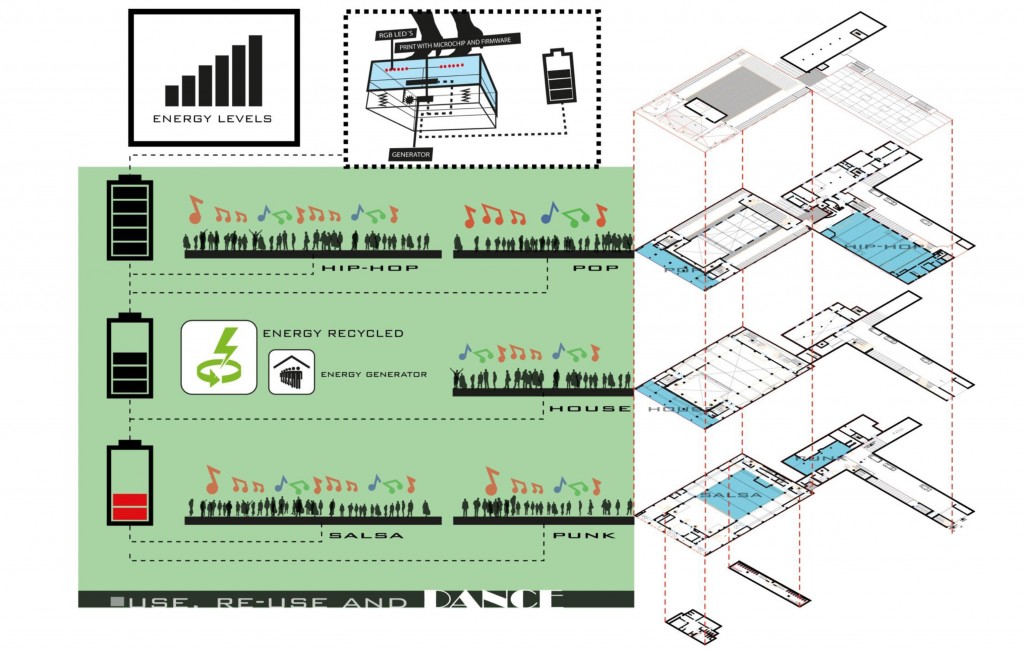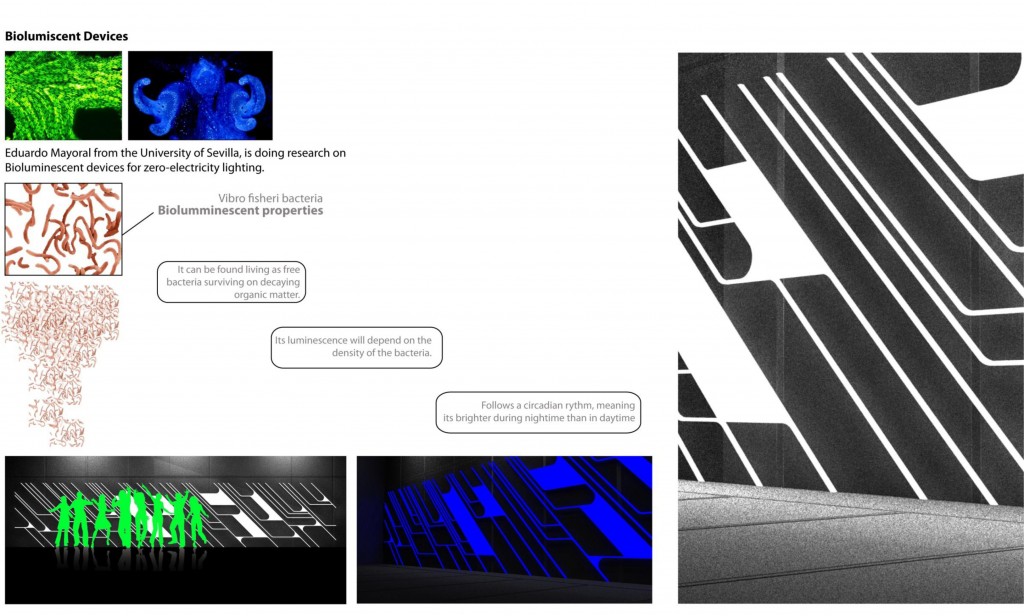RAZZMATAZZ ANALYSIS
Ventilation:
Works 100% on artificial ventilation since all the windows are sealed in order to keep the sound inside to avoid sound pollution. Strategy: Reduce the usage of artificial ventilation
MISTING SYSTEM
Consist on introducing ultra-fine water droplets into the atmosphere so they can quickly absorb the energy present in the environment and boil off (evaporate). The energy (heat) that is used to produce this state, change from liquid to gas, is eliminated from the atmosphere, hence the air is called by the process called evaporative cooling.
Energy Generation:
The concentration of people dancing creates an energy that should be considered. Strategy: Generate energy with the dance floor.
Material Cycle:
One night with full attendance will use 3750 plastic glasses that are thrown to the garbage. Strategy: Alternative materials for glasses.
Lighting:
The current incandescent-lighting system produces more heat than lighting. Creating more energy consumption on ventilation system. Strategy: Alternative ways for lighting.
The new proposal for the Razzmatazz promotes the creation of opened holes at the roof of the “salas”. By doing so air keeps moving from the bottom to the top, the water drops with the heat turn into vapor and then go out with the air. This system will work in a big space like razzmatazz’s dancing room because the air can moves quickly inside.
Lots of factories in China are using this system in the interior instead of A/C systems, it is cheap and effective. It was also used at Shanghai expo 2010.
The A/C system is a filter for vapor, it inhales the vapor and disposes of the water sending filtrated dry air out. That is why people feel dry in small rooms with the A/C system on.









